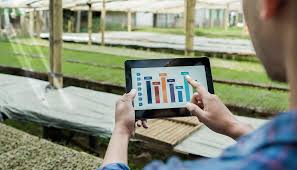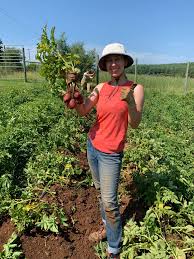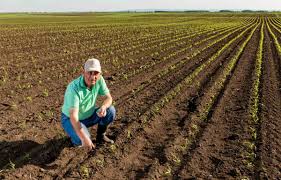A feasibility study is an investigation into the potential outcome of an agricultural project, i.e., whether the project is going to be practicable and profitable. The term “feasibility” is derived from the verb “to be feasible,” meaning practicable or viable.
Before making a final decision to undertake an agricultural project, the technical, economic, commercial, and financial justification of the chosen project shall be ascertained in concrete terms.
A feasibility study is also known as a “techno-economic feasibility study.” It may be used as a planning device or as a technical document. When used as a planning document, important decisions necessary for the success of the project are highlighted.
These include the type of technology to be used, the infrastructure required, the financial requirements, and the sources of finance. When it is used as a technical document, important steps concerning the channel through which the product will reach the customers, an understanding of the macro-economic system that affects the agricultural environment, and the policies shaping this environment are taken into consideration.
The researcher will also need to exhibit financial skills to advise the investor on alternative options for raising money for the intended project. These skills are also needed to draw up financial statements that summarise activities at particular points in time, such as cash flow, profit and loss account, and balance sheet.
Technical skills are required to predict the types of equipment, the technology to be used in terms of efficiency, the production process, the types of raw materials to be used, the layout of equipment, and how spare parts can be sourced. The last technical aspect is the management skill, which should be embedded in the feasibility study.
This will enable the investor to know what category of personnel will be involved and the types of experience, qualifications, and other suitable characteristics they possess. Since a feasibility study is used to raise funds from banks and finance houses, it should be bankable—that is, realistic enough for the bank to accept.
Read Also: Allium Flowers (Ornamental Onion) – All you need to know
Data Collection in Agricultural Feasibility Studies

A feasibility study starts with data collection. Data are collected from two main sources: primary and secondary. Primary data are gathered first-hand by the researcher through questionnaires, interview schedules, observation, or experimentation.
Secondary data already exist and can be obtained from sources such as libraries, the National Bureau of Statistics (NBS), Central Bank reports (CBN), centers for management studies, Chambers of Commerce, Ministries, and others.
Data Analysis for Agricultural Projects
After generating the necessary data, analysis is conducted to determine the validity of the project in several key areas:
1. Technical Feasibility:
It is normally seen that while most projects receive favorable screening on their financial prospects, technical feasibility does not always get the required attention. For agricultural projects, particularly those involving manufacturing activities, the proposed technology must be carefully considered.
The technical feasibility can be evaluated by answering the following questions:
i. Is the technology proposed the latest available?
ii. What is the likelihood of the proposed technology becoming obsolete in the near future?
iii. Is the technology proposed a proven technology?
iv. Is the technology proposed available indigenously?
v. In the case of imported technology, is it readily available?
In simple terms, a technical feasibility study aims to analyse whether the proposed technology is capable of producing the intended goods or services to the required specifications and to the complete satisfaction of consumers, without becoming obsolete in the near future, while proving to be cost effective in the long run.
2. Economic Feasibility:
Economic viability is a cursory examination of whether the investment in the project will provide a satisfactory return to the economy. Major aspects to examine include whether the project will make better use of available raw materials, reduce or eliminate the use of scarce resources, and benefit the community as a whole.
3. Commercial Feasibility:
Before embarking on any product or service, the scope for successfully marketing it must be carefully and accurately assessed. If the product or service is new to the industry, conducting a systematic market survey is a prerequisite for estimating probable sales.
The estimated sales should exceed the proposed plant capacity sufficiently to overcome any pitfalls that might have been overlooked. If the product is already being manufactured by many others, the competitive edge in terms of quality, price, and consumer acceptability must be thoroughly studied.
4. Financial Feasibility:
Financial feasibility examines the workability of the project proposal regarding raising finance to meet the investment required—whether through equity (e.g., public issue of shares or other means) or debt (e.g., term loans from financial institutions or other methods).
In addition, financial feasibility includes calculations of the cost of debt, cost of procuring capital, cost of servicing the debt and equity, and anticipated profits, to ensure that the financial benefits expected exceed the financial costs involved.
Read Also: Angelica Flowers – All you need to know
Feasibility Report Components for Agricultural Projects

A feasibility report involves arranging relevant information about the project in a descriptive form to facilitate easy reading, understanding, and reference in business language. The feasibility study consists of two broad parts:
1. The Executive Summary:
This section provides an overview of the entire report at a glance. It highlights the most salient points of the project, such as:
i. The sponsor’s names and biological data, including the names of directors, main shareholders, and other partners if the business has been in existence.
ii. Location and siting, along with the main reasons justifying the choice of the site.
iii. The nature of the project, the anticipated level of production (e.g., at full capacity or otherwise), and the differences between the product and its competitors.
iv. The business goal.
v. The market and marketing aspects: market demand for the project and the proposed selling price, including the marketing arrangement and channels to be utilized (e.g., wholesalers or direct selling to consumers).
vi. The total project cost, including fixed investment, preliminary and pre-operating expenses, working capital needs in both local and foreign currencies, and the total cost.
2. The Product/Service: The nature of the product or service, proprietary rights (such as patents, copyrights, or other legal aspects), comparisons with the closest competing product or service, distinguishing features, scale of operation, and expected production quantities daily, weekly, monthly, and annually at full capacity.
3. The Manufacturing and Production Process: A list of raw materials and their sources, other materials needed to transform the raw materials, a description of the steps through which the raw materials pass before becoming the finished product, the technical skills needed, location and siting advantages and disadvantages, and proximity to raw materials, markets, and public utilities (e.g., seaports, airports, roads, railway lines, power, water, and their requirements).
4. The Market Analysis: Details such as the target audience (e.g., children, women, youths), how demand is affected by the environment, and analysis of:
5. Economic Environment: GDP, disposable income (purchasing power), interest rate structure, inflation rate, unemployment level, standard of living, foreign exchange availability, government spending structure, raw material supply, currency devaluation, wages and salaries, and competition behaviour.
6. Socio-Cultural Environment: Lifestyle, family system and size, changes in social values, and attitude toward authority.
7. Demographic Trends: Population growth, age distribution, rural-urban migration, life expectancy, birth rates, and ethnic and religious composition.
8. Political and Legal Environment: Government regulation, price control systems, tax structures, expatriate quotas, customs, and excise tariffs.
9. Technological Environment: Availability of machinery and maintenance services.
Other aspects of market analysis may include total market volume, industry trends, identification of the target market, nature of competition, and a five-year demand forecast.
10. Marketing Strategy: The strategy to be pursued (e.g., product strategy, pricing strategy, distribution channels, promotional activities, packaging, and branding methods).
11. Management Plan: The form of business ownership (sole proprietorship, partnership, limited liability, public limited company, etc.), organizational structure, and a chart showing management staffing plans and projected growth in staffing over five years.
12. Financial Data:
i. Capital Cost: The monetary expression of resources invested in physical and other arrangements to execute the plan, including capital expenditure when assets are acquired.
ii. Financial Statements: Projections for the profit and loss account covering five years (with the first year on a quarterly basis, and subsequent years annually), five-year balance sheet projections, and a five-year cash flow statement.
iii. Sensitivity Analysis: An analysis to determine how sensitive the financial statements are to adverse changes (e.g., a 10% rise in raw material prices, a drop in sales price, or an increase in loan interest).
Reasons Not to Conduct a Feasibility Study
Project leaders may find themselves under pressure to skip the “feasibility analysis” step and proceed directly to building a project. Some reasons given for not doing feasibility analyses include:
i. “It is already feasible; an existing project is doing it.”
ii. “Why conduct another feasibility study when one was done just a few years ago?”
iii. “Feasibility studies are just a way for consultants to make money.”
iv. “The feasibility analysis has already been done by the project that is going to sell us the equipment.”
v. “Why not just hire a general manager who can do the study?”
vi. “Feasibility studies are a waste of time; the building needs to be bought, the site tied up, and the equipment bid on.”
These reasons should not dissuade the conduct of a meaningful and accurate feasibility study. Once decisions are made about proceeding with a proposed project, they are often very difficult to change, and it may be necessary to live with these decisions for a long time.
Reasons to Conduct a Feasibility Study

Conducting a feasibility study is good business practice. Examination of successful businesses reveals that new ventures were not undertaken without first thoroughly examining all issues and assessing the probability of success. Other reasons to conduct a feasibility study include:
i. It gives focus to the project and outlines alternatives.
ii. It narrows down business alternatives.
iii. It surfaces new opportunities through the investigative process.
iv. It identifies reasons not to proceed.
v. It enhances the probability of success by addressing and mitigating potential issues early on.
vi. It provides quality information for decision-making.
vii. It helps to increase investment in the company.
viii. It provides documentation that the business venture was thoroughly investigated.
ix. It assists in securing funding from lending institutions and other sources.
The feasibility study is a critical step in the agricultural project assessment process. If properly conducted, it may be the best investment ever made.
Do you have any questions, suggestions, or contributions? If so, please feel free to use the comment box below to share your thoughts. We also encourage you to kindly share this information with others who might benefit from it. Since we can’t reach everyone at once, we truly appreciate your help in spreading the word. Thank you so much for your support and for sharing!
Read Also: Reducing your Environmental Impact
